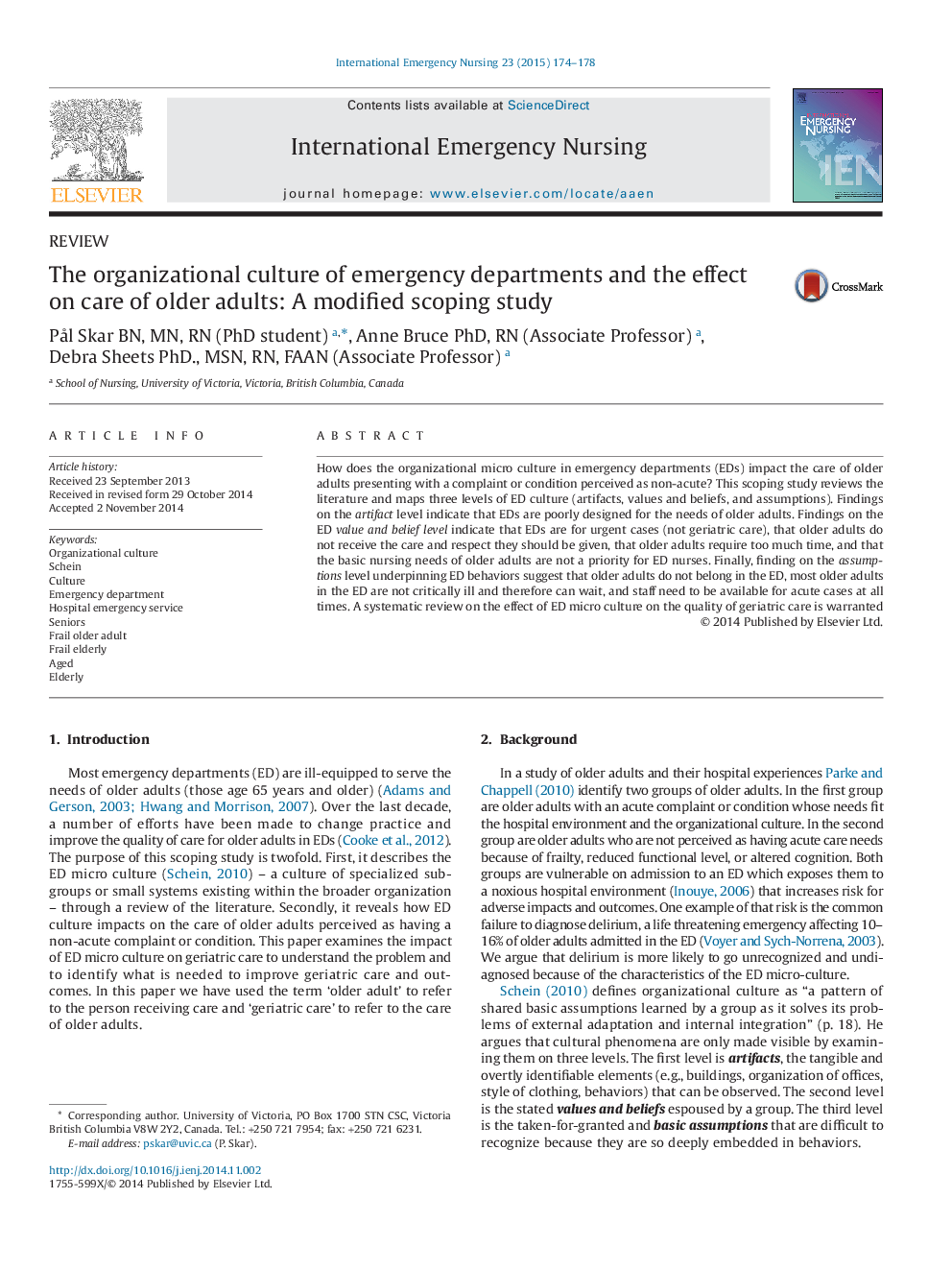| Article ID | Journal | Published Year | Pages | File Type |
|---|---|---|---|---|
| 2609364 | International Emergency Nursing | 2015 | 5 Pages |
•We reviewed literature on care of older adults in Emergency Departments and assessed organizational culture.•We found that artifacts such as building design and the physical organization negatively impact care of older adults.•ED staff members' values and beliefs impact the respect older adults are given and the care they receive.•ED staff members hold the underlying assumption that the ED is not the place for older adults with non-urgent needs.•A comprehensive, systematic review on ED staff member experiences of older adults is needed.
How does the organizational micro culture in emergency departments (EDs) impact the care of older adults presenting with a complaint or condition perceived as non-acute? This scoping study reviews the literature and maps three levels of ED culture (artifacts, values and beliefs, and assumptions). Findings on the artifact level indicate that EDs are poorly designed for the needs of older adults. Findings on the ED value and belief level indicate that EDs are for urgent cases (not geriatric care), that older adults do not receive the care and respect they should be given, that older adults require too much time, and that the basic nursing needs of older adults are not a priority for ED nurses. Finally, finding on the assumptions level underpinning ED behaviors suggest that older adults do not belong in the ED, most older adults in the ED are not critically ill and therefore can wait, and staff need to be available for acute cases at all times. A systematic review on the effect of ED micro culture on the quality of geriatric care is warranted
